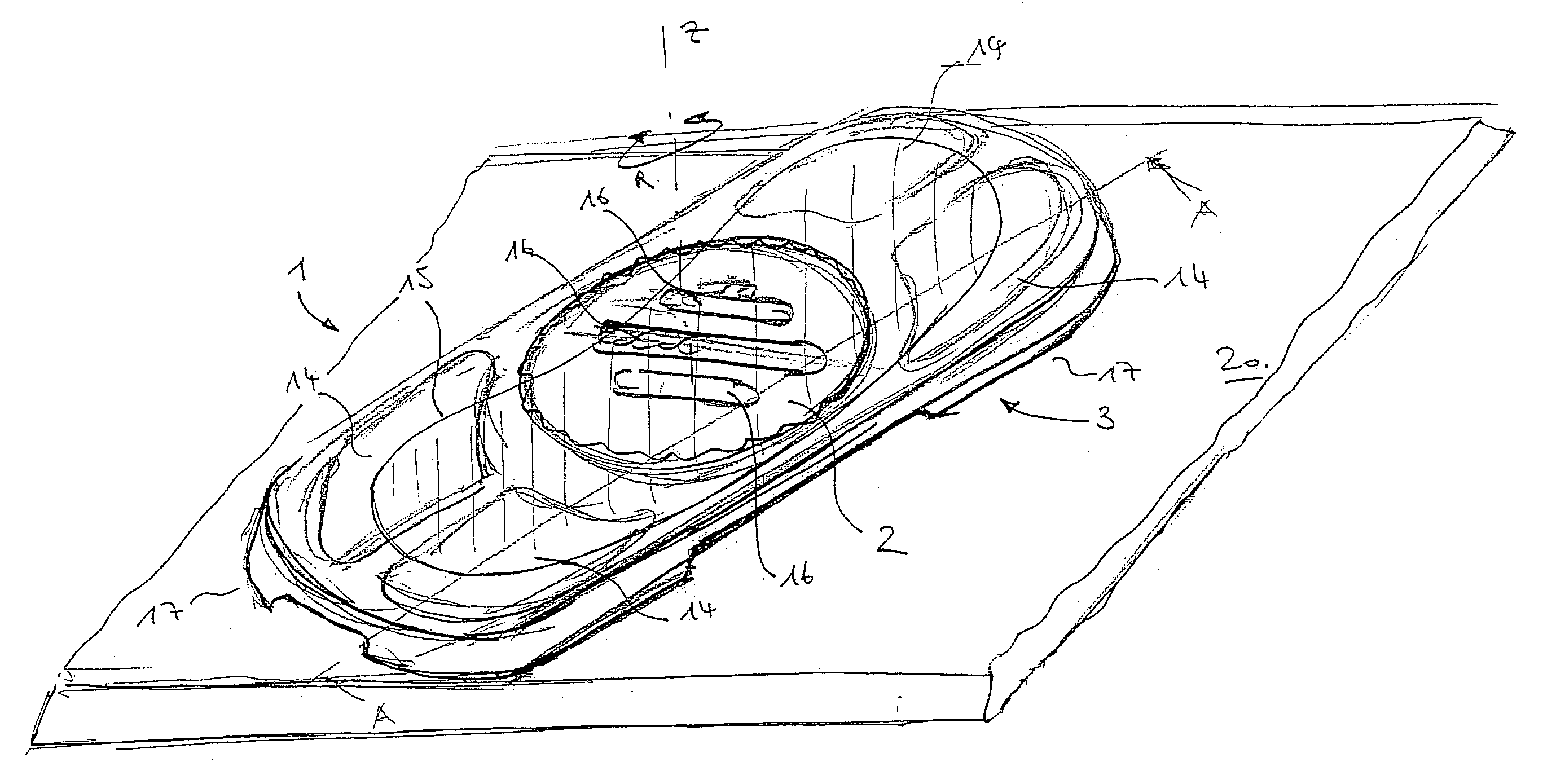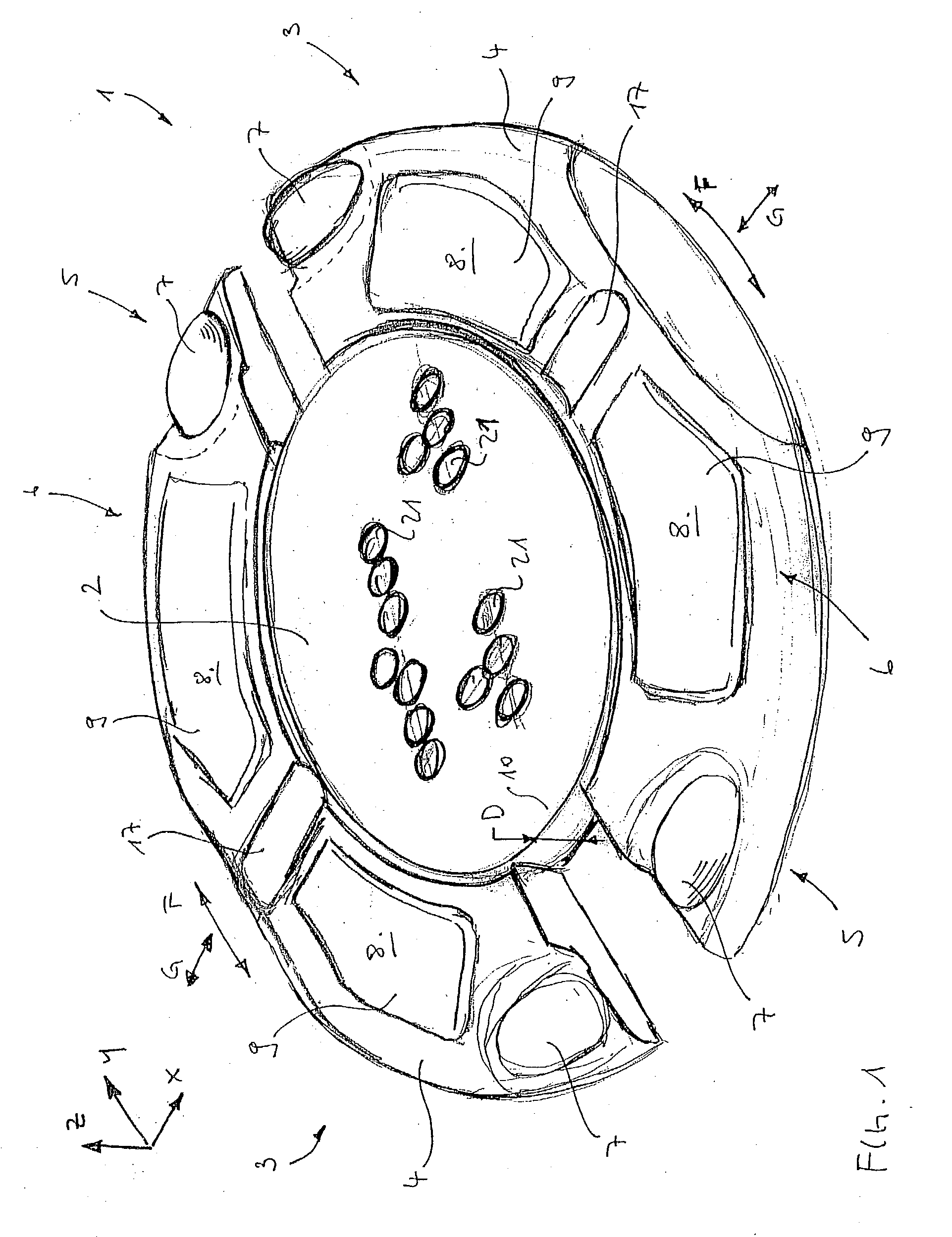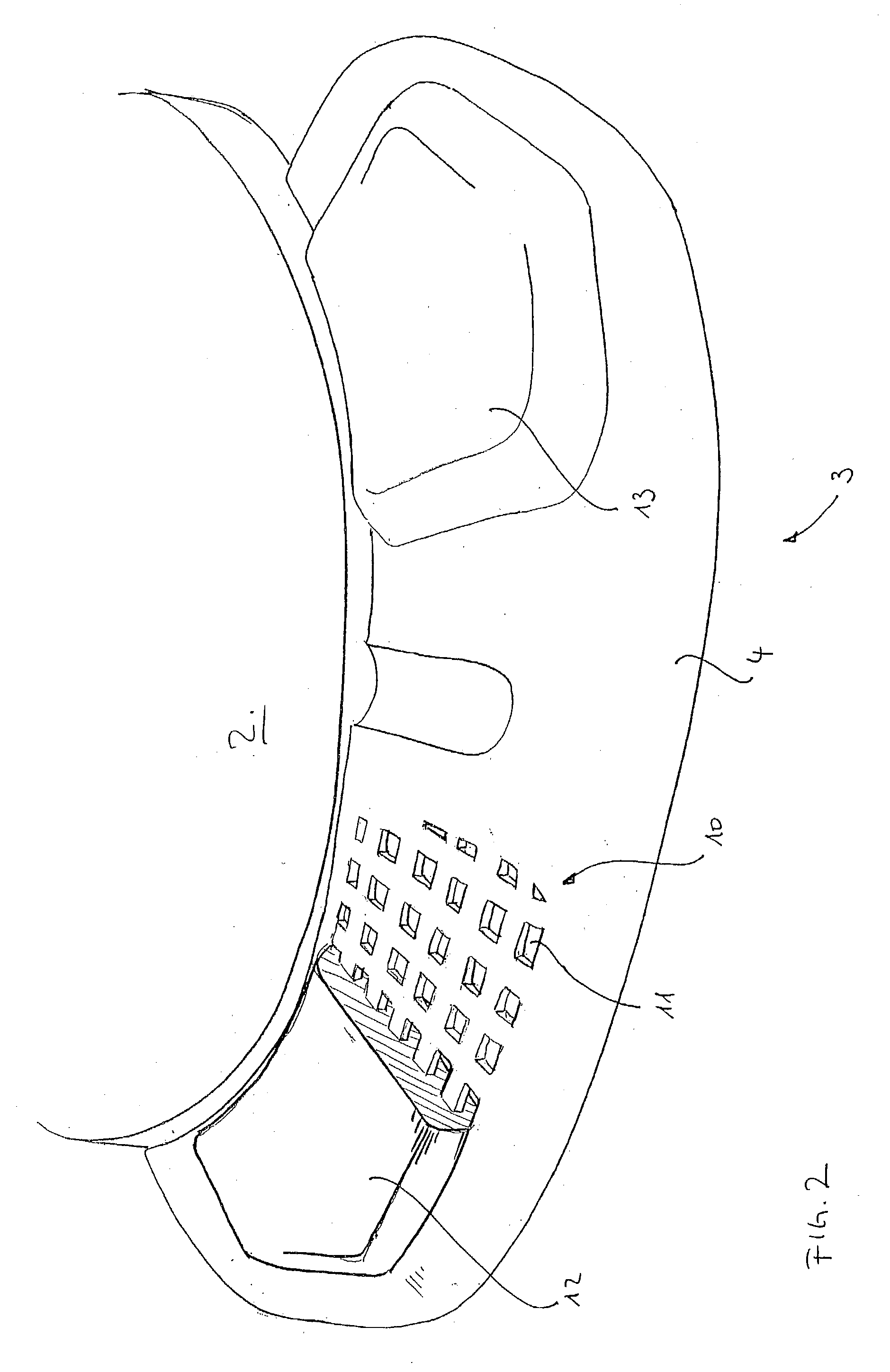Spacer for snowboard
a spacer and snowboard technology, applied in the field of snowboard spacers, can solve the problems of long indirect load paths, short indirect load paths, and inability to achieve good damping and shock absorption, so as to improve the distance between the snowboard boot and the snowboard, improve the load introduction, and improve the effect of pressure build-up
- Summary
- Abstract
- Description
- Claims
- Application Information
AI Technical Summary
Benefits of technology
Problems solved by technology
Method used
Image
Examples
Embodiment Construction
[0021] FIG. 1 illustrates a first embodiment of a spacer 1 in a perspective view. The spacer 1 comprises a centre part 2 and two sickle shaped lateral parts 3 which are arranged adjacent to the centre part 2 adjustable radially and tangentially (arrows F, G) with respect to the centre part 2 in a certain distance such that they are adoptable to the width of a snowboard (not displayed). The horizontal projection of the centre part 4 of this embodiment is round, but may be different, if appropriate. The horizontal projection of the lateral parts 3 is in essentially sickle shaped and is corresponding along the inner side with the edge 10 of the centre part 2. The lateral parts 3 have a dual density construction comprising two materials with different material constants. A first material is forming a first part 4. Arranged at a first and a second specific location 5, 6 first and second pads 7, 8 are visible made of a second, in this embodiment elastomeric material having a lower modulus...
PUM
 Login to View More
Login to View More Abstract
Description
Claims
Application Information
 Login to View More
Login to View More - R&D
- Intellectual Property
- Life Sciences
- Materials
- Tech Scout
- Unparalleled Data Quality
- Higher Quality Content
- 60% Fewer Hallucinations
Browse by: Latest US Patents, China's latest patents, Technical Efficacy Thesaurus, Application Domain, Technology Topic, Popular Technical Reports.
© 2025 PatSnap. All rights reserved.Legal|Privacy policy|Modern Slavery Act Transparency Statement|Sitemap|About US| Contact US: help@patsnap.com



